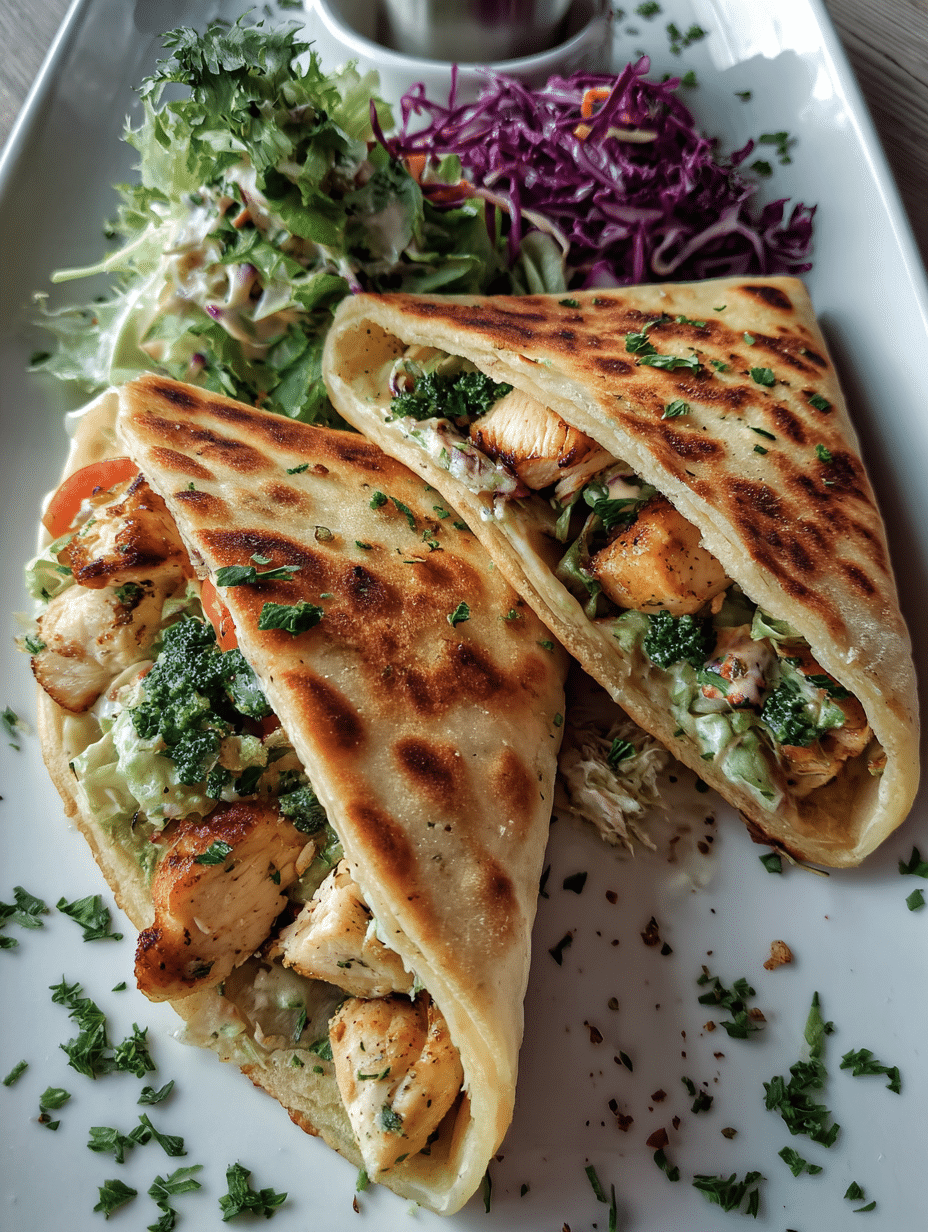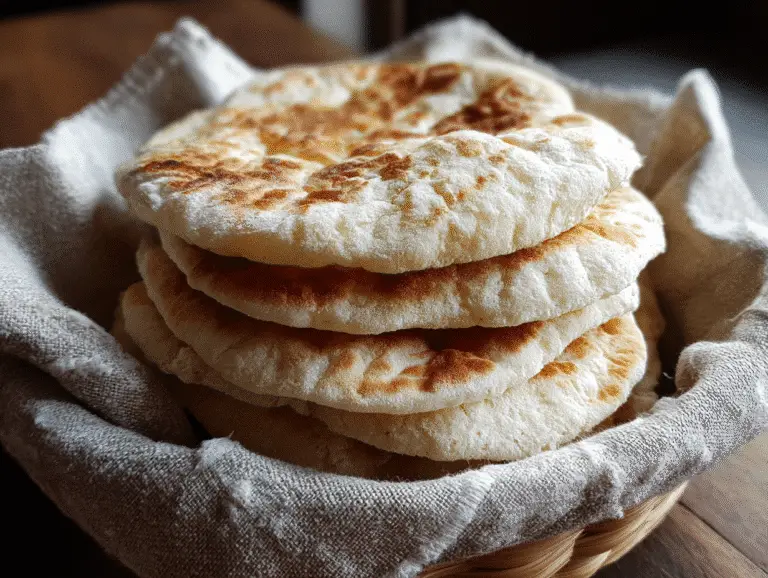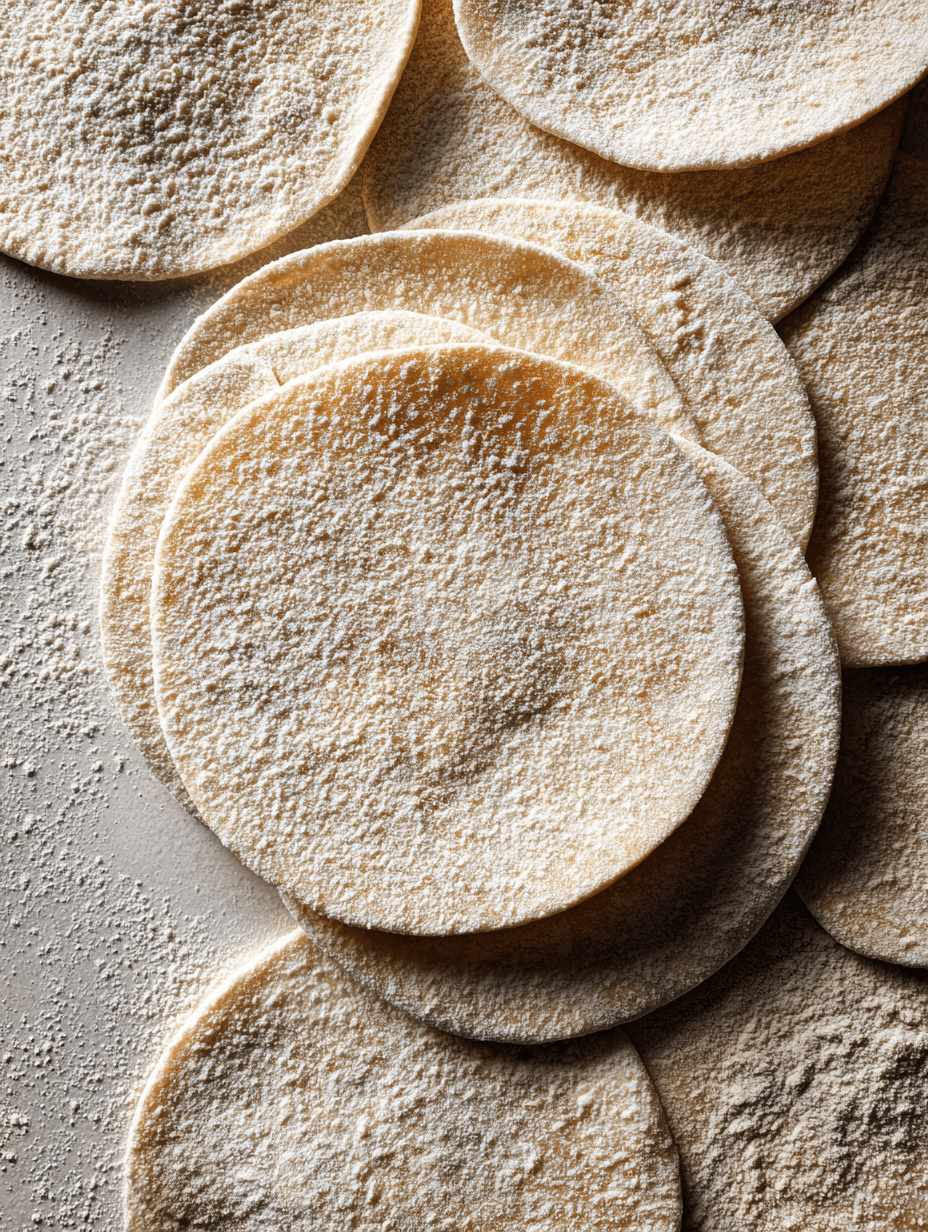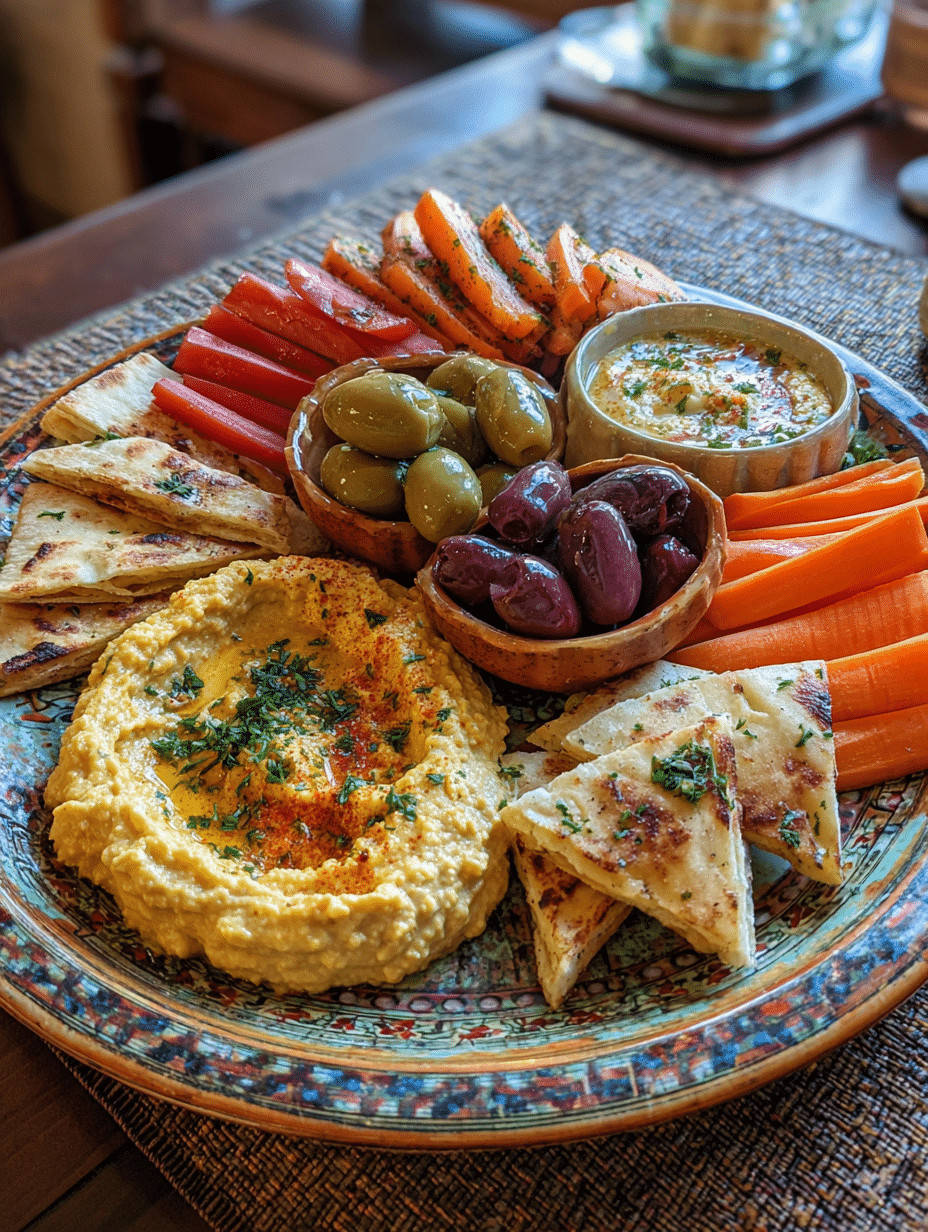Craving warm, pillowy pita without the gluten? Whether you’re living with celiac disease, gluten intolerance, or just trying to cut out wheat, gluten free pita bread is a game-changing option that delivers on taste, texture, and flexibility. Traditional pita may be off-limits, but that doesn’t mean you have to give up your favorite Mediterranean wraps or hummus dippers.
In this ultimate guide, we’ll break down how to make or buy the perfect gluten free pita bread—soft, chewy, and with that signature pocket you love. You’ll discover the best gluten-free flours to use, what brands are safe, the most common baking mistakes to avoid, and even tasty alternatives if you’re skipping grains altogether.
You’ll also learn how to build the perfect gluten-free meal with pita: from wraps and gyros to sweet spreads and crunchy chips. Plus, we’ll cover how to adapt the recipe for vegan or low-carb diets and how to store your bread for week-long use.
Check out gluten free bread for a sliceable everyday option you can pair with your favorite spreads or soups.
Table of Contents
What Is Gluten Free Pita Bread?
What Makes Pita Bread Gluten-Free?
Pita bread is known for its soft chew and iconic pocket, usually made with white flour and yeast. The problem? Traditional pita relies heavily on gluten, the protein found in wheat that gives dough its elasticity. So to make it gluten-free, we have to reimagine the recipe from the flour up.
Gluten free pita bread is made using alternative flours like sorghum, oat, almond, or rice flour—usually in a blend—to mimic that soft, pliable texture. It also calls for binding agents like psyllium husk or xanthan gum, which help replace gluten’s role in holding everything together. The result? A tender, slightly chewy flatbread that still folds, wraps, and scoops like the real deal.
Don’t worry—just because there’s no wheat doesn’t mean you have to sacrifice flavor or texture. Done right, gluten free pita can be just as delicious (and honestly, more nutrient-dense) than anything you’d find at the store.
Traditional vs. Gluten-Free Pita: What’s the Difference?
Here’s a quick look at how gluten-free pita compares to the traditional version:
| Feature | Traditional Pita | Gluten Free Pita Bread |
|---|---|---|
| Main flour | All-purpose or whole wheat | Oat, almond, sorghum, or rice flours |
| Elasticity | Naturally from gluten | Requires binders (psyllium, xanthan) |
| Rise/pocket | More predictable | Needs careful shaping and heat |
| Flavor | Neutral, wheat-based | Nutty or earthy depending on flours |
| Digestibility | Can cause bloating (gluten) | Easier to digest for many people |
While you might not get that perfect pocket every time, a good gluten-free pita is still great for stuffing, scooping, or simply enjoying warm with olive oil and herbs.
Looking for inspiration? Try gluten free banana nut bread muffins for another soft, gluten-free bake that’s perfect for everyday snacking.
Who Should Eat Gluten Free Pita Bread?

Gluten Free Isn’t Just a Trend—It’s a Necessity for Many
Gluten-free eating isn’t just a wellness fad—it’s a real medical requirement for millions of people. Those with celiac disease or non-celiac gluten sensitivity must avoid gluten 100% of the time, even in small amounts. And that includes seemingly simple foods like pita bread.
Traditional pita is made with wheat flour, which contains high levels of gluten. That’s a big red flag for anyone with gluten-related health conditions. Fortunately, gluten free pita bread gives these individuals a way to enjoy the same soft, foldable flatbread—without the risk.
So, can people with celiac disease eat pita bread?
Can People with Celiac Disease Eat Pita Bread?
Yes—but only if it’s truly gluten-free. Pita made with certified gluten-free flours (and prepared in a gluten-free kitchen) is safe for people with celiac disease. It’s important to read labels, verify cross-contamination policies, or—better yet—make your own at home to be sure.
Here’s what to look for when buying or baking pita bread for a gluten-free diet:
- ✅ Certified gluten-free flours like oat, sorghum, or almond
- ✅ No wheat, barley, or rye in the ingredient list
- ✅ Dedicated gluten-free facilities or bakery practices
- ✅ Clear packaging labels (look for the gluten-free seal)
If you’re unsure about a brand’s safety—or you’ve had accidental exposure before—it’s always better to bake your own. We’ll share a foolproof recipe in Part 4 to help you do just that.
Other People Who May Benefit from Gluten Free Pita Bread
Beyond celiac, here are a few more reasons why someone might reach for gluten free pita bread:
- Non-celiac gluten sensitivity – Symptoms like bloating, fatigue, or joint pain
- Irritable bowel syndrome (IBS) – Some people feel better on a low-gluten or gluten-free diet
- Autoimmune conditions – Some practitioners recommend gluten-free eating to reduce inflammation
- Athletes and wellness-focused eaters – Looking for more nutrient-dense carbs
Gluten-free pita made from whole grains and nuts can also be higher in fiber and protein, depending on the flour blend—making it a great option for more than just dietary restrictions.
Don’t miss our cottage cheese bagels—a high-protein, gluten-free-friendly recipe that pairs perfectly with pita in any brunch spread.
Print
Gluten Free Pita Bread – The Best Guide for Soft, Pocket-Friendly Flatbreads
Soft, chewy gluten-free pita bread made with a balanced blend of oat, sorghum, and tapioca flours plus psyllium husk for structure—perfect for wraps, dipping, and Mediterranean meals.
- Total Time: PT42M
- Yield: 6–8 pitas 1x
Ingredients
- 1 cup oat flour
- ¾ cup sorghum flour
- ¼ cup tapioca starch
- 1 tbsp psyllium husk powder
- 1 tsp baking powder
- ½ tsp salt
- ¾–1 cup warm water
- 1 tbsp olive oil (plus more for skillet)
- Optional: 1 tsp honey or maple syrup
Instructions
- Mix ¾–1 cup warm water with psyllium husk; let gel for 5–10 min.
- In a bowl, whisk oat flour, sorghum flour, tapioca starch, baking powder, and salt.
- Add psyllium gel and olive oil; stir into a dough, adding water if needed.
- Cover and rest for 15–20 min to hydrate.
- Divide into 6–8 balls; roll each into ~¼″ thick disks.
- Heat oiled cast‑iron skillet over medium-high. Cook each pita 2–3 min per side until puffed and lightly browned.
- Keep cooked pitas in a towel-lined bowl to steam and stay soft.
Notes
Use a balanced flour blend and psyllium husk to mimic gluten structure. Resting the dough is key to hydrate flours. Store in an airtight bag at room temperature up to 3 days, refrigerate up to 1 week, or freeze for longer storage.
- Prep Time: PT30M
- Cook Time: PT12M
- Category: Bread
- Method: Baking
- Cuisine: Gluten‑Free Mediterranean
Nutrition
- Serving Size: 1 pita
- Calories: 150
- Sugar: 1g
- Sodium: 200mg
- Fat: 4g
- Saturated Fat: 0.5g
- Unsaturated Fat: 3g
- Trans Fat: 0g
- Carbohydrates: 28g
- Fiber: 5g
- Protein: 4g
- Cholesterol: 0mg
Ingredients That Make the Perfect Gluten Free Pita
Creating truly satisfying gluten free pita bread comes down to one word: balance. Without gluten, you lose elasticity and structure. That means your success depends entirely on choosing the right flours and binders—and combining them the right way.
Let’s dive into the ingredients that make it all work.
Best Flours for Gluten Free Pita Bread
To mimic the softness and chewiness of wheat-based pita, gluten-free bakers rely on flour blends. Each flour brings something different to the table:
| Flour | What It Does |
|---|---|
| Sorghum flour | Adds body and mild flavor, great for structure |
| Oat flour | Moisture-retaining, slightly sweet, soft crumb |
| Brown rice flour | Light and neutral, balances heavier flours |
| Almond flour | Rich, dense, adds healthy fats and a tender bite |
| Tapioca starch | Helps create stretch and chewiness in flatbreads |
For the best results, combine at least two flours—usually a whole grain base (like oat or sorghum) with a starch (like tapioca). This keeps your pita soft enough to fold and firm enough to hold together.
Binders: The Secret to Structure
Since we’re skipping gluten, we need another way to hold the dough together. That’s where binders come in. These create a stretch-like quality that helps your dough puff up and trap air—essential for creating that iconic pita pocket.
| Binder | How It Helps |
|---|---|
| Psyllium husk | Excellent elasticity and hydration, natural fiber-rich |
| Xanthan gum | Synthetic but effective in small amounts |
| Ground flaxseed | Adds moisture and mild structure, great for clean eating |
✅ Pro Tip: If you want soft, pocket-friendly pita, psyllium husk is a must. It absorbs water like a sponge, helping to replicate the softness and elasticity of traditional dough.
Check out cottage cheese chips recipe for another creative gluten-free snack idea that packs protein and crunch
Step-by-Step Gluten Free Pita Bread Recipe

If you’ve ever felt frustrated by dry, crumbly, or flat gluten-free breads, you’re not alone. But here’s the good news: with the right ingredients and a simple method, you can make gluten free pita bread that’s soft, bendable, and actually forms a pocket.
This recipe uses a blend of wholesome flours, a reliable binder, and simple steps that work in any home kitchen—no fancy tools required.
Tools You’ll Need
To make gluten free pita bread at home, start with a few basics:
- Mixing bowls (one large, one small)
- Whisk or silicone spatula
- Rolling pin
- Cast iron skillet or baking stone
- Clean towel or parchment paper
- Kitchen scale (optional, but helpful)
Ingredients (Makes 6–8 Pitas)
| Ingredient | Amount |
|---|---|
| Oat flour | 1 cup |
| Sorghum flour | ¾ cup |
| Tapioca starch | ¼ cup |
| Psyllium husk powder | 1 tablespoon |
| Baking powder | 1 teaspoon |
| Salt | ½ teaspoon |
| Warm water | ¾ to 1 cup |
| Olive oil | 1 tablespoon (plus more for skillet) |
✅ Optional: Add 1 teaspoon of honey or maple syrup for a slightly sweet flavor.
How to Make Gluten Free Pita Bread
- Hydrate the binder
In a small bowl, mix warm water and psyllium husk. Let it sit for 5–10 minutes until it forms a gel. This helps mimic the gluten structure. - Mix dry ingredients
In a large bowl, whisk together oat flour, sorghum flour, tapioca starch, baking powder, and salt. - Combine wet and dry
Add the psyllium gel and olive oil to the flour mixture. Stir to form a dough. If it’s too dry, add more warm water a tablespoon at a time. - Rest the dough
Cover and let the dough rest for 15–20 minutes. This allows the flours and binder to fully hydrate—key for soft, flexible gluten free pita bread. - Shape the pitas
Divide the dough into 6–8 equal balls. Roll each into a round disk about ¼ inch thick. Don’t go too thin or you’ll lose the pocket. - Cook the pita
Heat a cast iron skillet over medium-high. Lightly oil the surface. Place one pita round on the skillet and cook 2–3 minutes per side. Look for light browning and puffing. - Keep them soft
Place cooked pitas in a towel-lined bowl to steam slightly. This keeps them warm and pliable—perfect for wraps or dipping.
Don’t miss our pink salt morning tonic—a great gluten-free beverage to pair with your fresh pita.
Common Mistakes When Making Gluten Free Pita
If you’ve ever tried baking your own gluten free pita bread and ended up with flat, stiff disks or something that crumbles in your hands—don’t panic. It’s not you. Gluten-free baking plays by its own rules, and understanding where things can go wrong is half the battle.
Here are the most common pitfalls—and how to avoid them.
Why Won’t My Gluten Free Pita Puff Up?
Let’s start with the big one: the pocket. Traditional pita puffs up during baking because steam gets trapped inside elastic dough. But in gluten free pita bread, there’s no gluten net to hold that steam. Still, you can get good puffing with the right conditions.
Fix it with these tips:
- Rest the dough properly – This allows the binders (like psyllium husk) to fully hydrate and give structure.
- Roll evenly – Uneven dough leads to uneven steam release. Aim for ¼-inch thick all around.
- Use high, direct heat – A very hot pan or stone is key. The heat needs to hit fast to create steam before the dough sets.
- Don’t over-roll – Flattening too much or deflating the dough removes air pockets needed for the rise.
Even if your pita doesn’t puff perfectly, it still works as a soft wrap or for dipping.
Over-Dry or Brittle Texture
This happens when the dough doesn’t have enough moisture—or worse, when it’s overbaked. Because gluten-free flours absorb more liquid, they need a bit more attention.
Here’s what to do:
- Add more olive oil or water to the dough if it feels stiff
- Let the dough rest and hydrate fully before cooking
- Keep an eye on the cook time—pita dries out fast if left too long on the heat
- Cover baked pita with a towel to trap steam and stay soft
The Dough Is Too Sticky or Too Crumbly
This balance is tricky. If it’s sticky, it’s hard to shape. If it’s crumbly, it won’t hold together at all. That’s why binder-to-flour ratio matters.
| Problem | Cause | Solution |
|---|---|---|
| Too sticky | Too much water, under-mixed | Add more flour or let rest longer |
| Too dry | Not enough liquid or binder | Add 1 tbsp water at a time until pliable |
| Crumbles | No binder used | Use psyllium husk or flaxseed gel |
Discover great ideas like gluten free banana nut bread muffins for mastering moisture balance in gluten-free baking.
Best Gluten Free Pita Brands You Can Buy
Let’s face it—not everyone has time to make homemade pita from scratch. The good news? There are some great gluten free pita bread brands out there that bring that soft, foldable texture without the wheat. Whether you’re building a quick wrap or need something to dip in hummus, these store-bought options save the day.
Is Stacy’s Pita Gluten Free?
This one comes up a lot—and it’s an important question. Unfortunately, Stacy’s pita chips are NOT gluten free. While they’re popular and easy to find, they’re made from wheat flour, which contains gluten. That means they’re off-limits for anyone with celiac disease or gluten sensitivity.
If you’re looking for a gluten-free snack chip alternative, go with baked chickpea chips, almond flour crisps, or try making your own pita chips at home from certified gluten free pita bread.
Top Gluten Free Pita Bread Brands
Here are some of the most popular and trusted options that are certified gluten free and widely available in stores or online:
1. BFree Gluten Free Pita Breads
- Made with potato, rice, and buckwheat flours
- Soft texture and good for wraps
- Certified gluten free, dairy-free, and egg-free
- Available at major retailers and Amazon
2. MyBread Gluten-Free Pita
- 100% gluten free, made in a dedicated facility
- Thick, soft rounds that heat up well
- Also soy-free and nut-free
- Often sold in the frozen section
3. Atoria’s Family Bakery GF Flatbread
- While technically a flatbread, it’s perfect as a pita replacement
- No added sugar, and very pliable
- Free from gluten, dairy, and preservatives
4. Simple Mills Almond Flour Pita-Style Rounds
- Grain-free option with a nutty flavor
- Smaller, snack-style pita rounds
- Good for dipping and light wraps
Where to Buy Gluten Free Pita Bread
You can find gluten free pita bread at many local grocers, health food stores, and online. Look for them in:
- Freezer aisles – many GF pitas are sold frozen for freshness
- Gluten-free sections – usually near GF bagels, breads, and tortillas
- Amazon and Thrive Market – for hard-to-find brands
✅ Pro Tip: Always check labels. Even if something says “wheat-free,” it doesn’t always mean gluten free. Look for the certified gluten free seal for peace of mind.
Check out gluten free bread for more store-bought and homemade options that fit your diet and taste preferences.
Gluten Free Pita Bread Substitutes
So, what if you’re out of gluten free pita bread or just want to switch things up? Whether you’re avoiding grains, trying something low-carb, or looking for a different texture, there are plenty of delicious substitutes that still give you all the versatility of pita—without the gluten.
What Is a Good Substitute for Pita Bread?
The best substitute depends on how you’re using it. Need a wrap for falafel? A base for mini pizzas? A dipper for hummus? Here are smart alternatives to traditional or even gluten free pita bread:
✅ 1. Gluten-Free Tortillas
- Thin and flexible
- Great for wraps, quesadillas, and flatbread pizzas
- Try almond flour, cassava flour, or brown rice tortillas
✅ 2. Lettuce Wraps
- Crisp and naturally gluten-free
- Great for low-carb or Paleo diets
- Works best with larger leaves like romaine or butter lettuce
✅ 3. Cauliflower Flatbread
- Made from riced cauliflower, eggs, and cheese
- Gluten-free and low-carb
- Holds up well for sandwiches and wraps
✅ 4. Chickpea Flour Socca
- Thin, crepe-style flatbread from chickpea flour
- High in protein, gluten-free, and naturally vegan
- Perfect for folding or cutting into triangles for dips
✅ 5. Rice Paper Wraps
- Used in Vietnamese spring rolls
- Naturally gluten-free and super light
- Great for fresh veggie wraps or light sandwich alternatives
Looking for inspiration? Try cottage cheese bagels—a chewy, high-protein gluten-free bread alternative that makes a great swap for pita in breakfast sandwiches.
When Should You Use a Substitute Instead of Gluten Free Pita Bread?
If you’re short on time, watching carbs, or just want something lighter, these substitutes are great options. They don’t offer the same “pocket” as pita, but they’re versatile, tasty, and quick to prepare.
Use these swaps when:
- You want to skip baking
- You’re following a low-carb or keto diet
- You need something ultra-light or crisp
- You’re serving a crowd and need options for different dietary needs
Even if you love gluten free pita bread, having a few alternatives in your kitchen gives you more variety and flexibility in your gluten-free meals.
How to Serve Gluten Free Pita Bread

If you’re new to using gluten free pita bread, get ready—this flatbread is way more versatile than you might think. From savory lunches to unexpected desserts, gluten-free pita can do it all. Whether homemade or store-bought, it’s the perfect base for endless quick, tasty meals.
Mediterranean-Style Meals
Pita and Mediterranean food go hand in hand. Gluten free or not, the combo just works.
Here are some classic (and delicious) pairings:
- Falafel wraps with tahini, cucumber, and tomato
- Chicken shawarma tucked inside warm gluten free pita bread
- Gyros with marinated lamb and dairy-free tzatziki
- Greek salad pitas—just stuff your pita with chopped romaine, feta, olives, and red onion
Use lightly toasted pita for extra structure and flavor.
Dips and Spreads
This is one of the easiest and tastiest ways to enjoy gluten free pita.
Cut your bread into triangles, toast them, and serve with:
- Hummus – classic or spicy
- Baba ganoush – smoky and creamy
- White bean dip or black olive tapenade
- Tzatziki sauce – use coconut yogurt for a dairy-free version
These pairings make an awesome appetizer platter or snack board.
Don’t miss our pink salt morning tonic—a unique gluten-free drink that pairs well with salty pita sides.
Sandwiches and Wraps
Think beyond deli meat. Stuff your pita with:
- Egg salad with avocado
- Grilled veggies and pesto
- Tuna salad or chickpea “tuna”
- Scrambled tofu with greens for a plant-based option
Warm your pita slightly before stuffing for best results.
Sweet Pita Ideas (Yes, Really!)
Surprise: gluten free pita bread works with sweet toppings too.
Try this:
- Nut butter + banana + honey
- Greek yogurt + berries + maple syrup
- Chocolate spread + sliced strawberries
- Almond butter + apple slices + cinnamon
Kids love these, and they make a quick dessert or after-school snack that’s naturally gluten free.
Make Pita Chips for Crunchy Snacks
Just slice your gluten free pita into triangles, toss in olive oil and seasoning, and bake at 375°F for 10–12 minutes.
Perfect for:
- Charcuterie boards
- Crunchy salad toppers
- Healthy snacking with dips
Check out gluten free banana nut bread muffins if you want another gluten-free snack to pair with your pita chips.
FAQs About Gluten Free Pita Bread
You’ve got questions—we’ve got gluten-free answers. Below are the most common queries about gluten free pita bread, answered clearly to help you shop, bake, and eat with confidence.
Is There Gluten Free Pita?
Yes, absolutely! While traditional pita is made with wheat flour, gluten free pita bread uses alternative flours like sorghum, oat, almond, or rice. You can find it in grocery stores (frozen or fresh) or make it yourself at home. Just be sure the product is labeled certified gluten free, especially if you have celiac disease or a severe gluten intolerance.
Is Stacy’s Pita Gluten Free?
No, Stacy’s pita chips are not gluten free. They’re made with enriched wheat flour, which contains gluten. If you’re looking for a crunchy snack, you can make your own gluten-free pita chips at home using certified gluten free pita bread or buy alternatives made from almond flour, chickpeas, or corn.
What Is a Good Substitute for Pita Bread?
there are several great alternatives:
Gluten-free tortillas
Lettuce wraps
Chickpea flatbread (socca)
Cauliflower flatbreads
Rice paper rolls
Each works well depending on whether you’re building a wrap, making a sandwich, or dipping into hummus.
If you don’t have access to gluten free pita bread—or just want to try something new—
Can People with Celiac Disease Eat Pita Bread?
Only if it’s gluten free. People with celiac disease must avoid all forms of gluten, including wheat-based pita. But gluten free pita bread made in a certified GF facility and prepared without cross-contamination is completely safe—and delicious. When in doubt, bake it yourself or look for a trusted brand.
Check out gluten free bread for more tips on buying and making safe, wheat-free bread at home.
Conclusion: Is Gluten Free Pita Bread Worth Making or Buying?
The verdict? Absolutely. Whether you’re following a gluten-free diet for medical reasons or just trying to eat cleaner, gluten free pita bread is one of the most versatile—and satisfying—breads you can have on hand. With the right flour blend and simple techniques, it’s totally possible to create pita that’s soft, foldable, and full of flavor.
You can fill it, fold it, toast it, dip it, or even turn it sweet. And if you’re short on time, there are solid store-bought options out there that won’t compromise your diet or your taste buds. Just be mindful of labels, and stick with certified gluten-free brands when possible.
Whether you’re whipping up shawarma wraps or baking your own pita chips, there’s no reason to miss out on this Mediterranean staple. Gluten free pita bread is more than a replacement—it’s a worthy upgrade.
Looking for more inspiration? Try cottage cheese chips recipe for another quick gluten-free snack that pairs well with pita.


